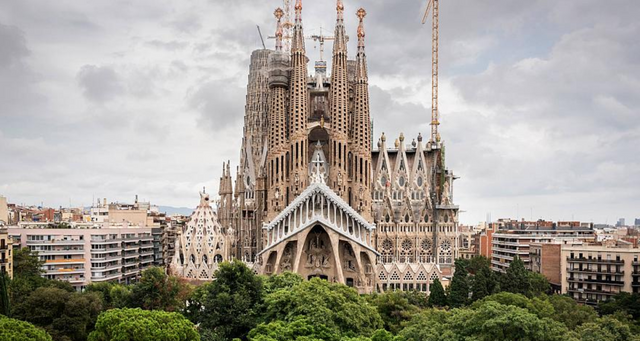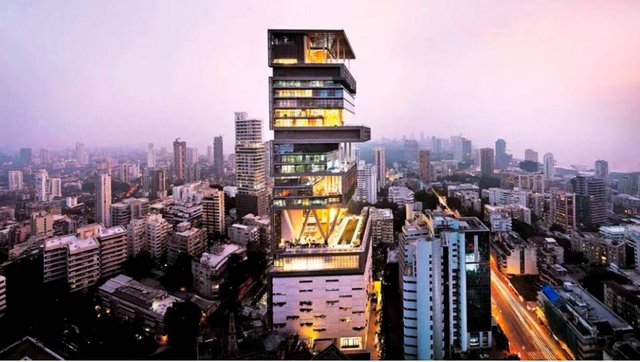Sustainable Standards and Free Trade - Pt.3
Pt. 3 - Introduction of my idea of pursuing "sustainability"
If you’ve come to read an expert opinion on sustainable fashion or textile manufacturing, I’m afraid you’re going to be disappointed. I’m no such expert. Nor do I think any exist. Very few of us around know how to build something that lasts hundreds of years, or that can be passed down generation to generation. The average lifespan of a Fortune 500 company is 30 years, and family fortunes amassed by one generation in the vast majority of cases are squandered and lost by the time of the grandchildren.
Centuries or longer sustainability requires massive group effort. All of us, working together towards something. Take a gander here at La Sagrada Familia Basilica in Barcelona is a cathedral that has been in the process of building for almost 300 years.

So what is truly sustainable? Sustainable over the ages. If you typed 'Sustainability" into the Google image search, this is what comes up. But to me, this is a very one dimensional representation of sustainability.

A true judgement of sustainability depends on how far out you have set your reflection points. What kind of timeline are you considering? Those little designs on top of a latte sustain themselves long enough for you to enjoy them. We’ve managed to sustain our hold on not annihilating each other with the nuclear weapons that countries have had pointed at each other for 70 years. But are we expecting to sustain that inevitably?
To rate sustainability at all you have to relate it to something. Perhaps, a dangerous practice or method of doing business. Something with a clearly more volatile expiry.
Like gambling, not a savy long term game. Fun in the short run. But then there are poker players who have figured out how to make a living. And a good living.
Relative to a whole lifetime - can they keep the same profession their whole life? Does their industry go back hundreds of years and plans to go on for hundreds more?
Is it like fashion or technology or food, is there no end in sight and it is forever iterating? Or is it burning through resources so fast that the prices it is sold at fluctuates daily. And we erect signs with bright lights in front of our stores to tell us what this resource costs today.
People seem to think the Question Zero here is "are the methods I'm using currently ones that I can continue to use and be profitable from for the foreseeable future?"
But none of us know the conditions that are going to change our future.
So the entire thing is a game of best-guess. That’s all my business model is - it’s just my best guess at what I had a shot at making work. I looked back at the longevity of the industry of trade and saw that it has been around long enough to be embedded in our very DNA. You can't ask for more of a track record.
People in an area do what they're best at and they trade with people from another area, who are also engaged in doing what they are best at. Apples for cloth for bronze work for spices.
I also looked at the modern state of trade and consumerism and saw a clear trade imbalance in between some areas. Benefits of labor go to a disproportionate number of individuals at the top of any productive field. That is why we can have billion dollar condos sticking out from the slums in Mumbai.

So my best guess was that the true capitalist model mostly works, and that it is a little broken.
"True" capitalism emerged from early trade. Once merchants had acquired sufficient wealth (referred to as 'primitive capital') to begin investing in increasingly productive technology.
This account tends to see capitalism as a natural continuation of trade, arising when people's natural entrepreneurialism was freed from the constraints of feudalism.
So if an early capitalist who was a trader for the Dutch East India Company made an additional $50,000 in a year, he would re-invest that capital by hiring someone, thereby making his business more productive and making the community better off.
Now we are certainly a far way off from that in how we look at each other. We have got to reverse this idea at the base of capitalism from using humans as capital to creating people as the beneficiaries. Please listen to this two minute excerpt from Alan Watts that sums it up brilliantly. (Alan Watts on Money)
The nice thing about running your own business is that you can run it however you damn well please. That part of modern capitalism that I think needs addressing is that way in which profits of industry flow unequally to those at the top.
So I stole a great idea. The BOGO 3.0 business model of revenue distribution to fund new companies through targeted micro loans. A few % off the top, that goes directly back to the communities where my suppliers and manufacturers are. Goes to start new businesses in those communities. Which creates more jobs and wealth in those communities.

My suppliers end up better supported and there are more of them. It’s a long-term play - of course it’s a long term play I think is going to work - so for me it’s a sustainable business model. It a virtuous circle. A system that has the ability to support itself.
Check out my other posts on Steem @
- https://steemit.com/trade/@almostfitz/sustainable-standards-and-free-trade-pt-1
- https://steemit.com/risk/@almostfitz/day-411-you-vs-the-ledger
- https://steemit.com/pareto/@almostfitz/day-404-the-pareto-demon
- https://steemit.com/problems/@almostfitz/yeah-sure-wake-up
- https://steemit.com/problems/@almostfitz/solve-interesting-problems
- https://steemit.com/work/@almostfitz/bringing-it-home
- https://steemit.com/timing/@almostfitz/timing-is-everything
- https://steemit.com/startup/@almostfitz/today-is-free
- https://steemit.com/funding/@almostfitz/think-local-act-global
- https://steemit.com/revenue/@almostfitz/day-4-369-the-wheel-turns-all-ways
- https://steemit.com/insurance/@almostfitz/day-3-368-what-aren-t-you-insured-for
- https://steemit.com/startup/@almostfitz/day-2-find-funding-day-367-find-customers
- https://steemit.com/startup/@almostfitz/the-day-it-all-started
- https://steemit.com/startup/@almostfitz/experimenting-with-the-bogo-3-0-business-model
- https://steemit.com/startup/@almostfitz/why-this-business-data-confidence-and-shit-testing
- https://steemit.com/startup/@almostfitz/why-this-business-set-your-anchors-deep
- https://steemit.com/travel/@almostfitz/tourists-pull-your-head-out-of-your-ass
- https://steemit.com/worst/@almostfitz/the-potential-freedom-in-being-the-world-s-worst-entrepreneur-
- https://steemit.com/business/@almostfitz/open-for-business-11-pictures-about-launching-a-startup-speak-11-000-words
Check out my posts on my other blog on my Shopify store @